“She sells seashells by the seashore.”
Ever wondered why exactly it is that these tongue twisters are so tricky? It’s all because of alliteration.
Our brains are wired to recognize patterns like rhyme and repeated sounds more than an abstract composition of words.
Alliteration refers to the repeated consonant sound between two or more neighboring words.
It’s often the initial or first sound of the word being repeated. It’s commonly used in poetry and rap songs, and even Taylor Swift is a fan:
“And, baby, now we’ve got bad blood.”
Slick right? But today, we are focusing on the use of alliteration in academic writing and literature.
In this guide, we’ll break down everything you need to know about alliteration, from its basic definition to advanced techniques that will transform your writing.
We’ll explore famous examples that have stood the test of time, walk through step-by-step instructions for creating your own alliterative masterpieces, and even point out common mistakes to avoid.
Let’s get into the delightful, dynamic domain of alliteration!
What Is Alliteration? (Simple Definition)
Alliteration happens when words that are close to each other start with the same consonant sound. Notice we said sound, not letter? That’s super important to remember.
Take “Peter Piper picked a peck of pickled peppers.” Here, the repeating “p” sound creates a pattern that’s both pleasing to the ear and fun to say.
That’s a classic alliteration-heavy children’s book at work.
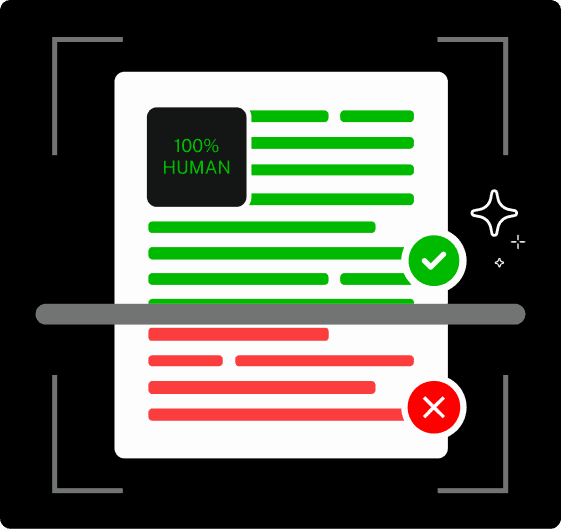
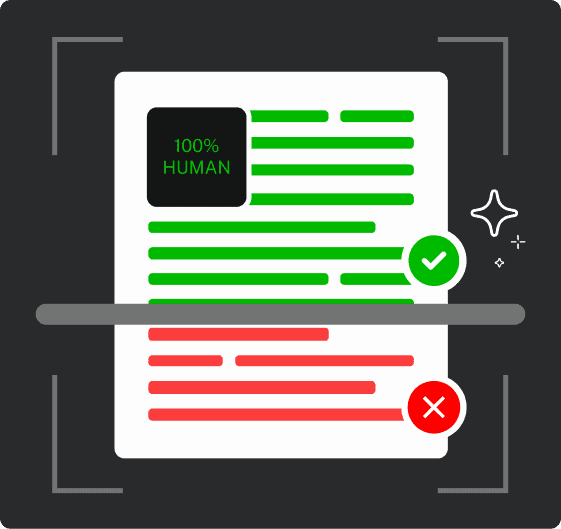
Never Worry About AI Detecting Your Texts Again. Undetectable AI Can Help You:
- Make your AI assisted writing appear human-like.
- Bypass all major AI detection tools with just one click.
- Use AI safely and confidently in school and work.
But here’s where it gets interesting: “knight” and “knife” would create alliteration because they share the same “n” sound, even though we don’t pronounce the “k.” Similarly, “city” and “symphony” create alliteration with their “s” sound, despite different spellings.
On the flip side, “giant” and “garage” don’t create alliteration, even though they both start with “g,” because they make different sounds (“j” versus “g”).
This sound-based nature is what makes alliteration so effective. Remember, it’s about what we hear, not what we see.
It creates a musical quality in language that our brains find satisfying and memorable.
Some quick examples to cement the concept:
- Bouncing baby boy
- Wild and woolly wilderness
- She sells seashells by the seashore
- Mickey Mouse makes merry music
In each case, that repeated initial sound creates a rhythm and flow that makes the phrase more impactful and easier to remember.
No wonder it’s a favorite technique for everything from children’s books to corporate slogans.
Famous Alliteration Examples in Literature
Literature is packed with perfect examples of alliteration that have become iconic parts of our cultural vocabulary.
These examples show just how versatile and powerful this device can be in the hands of skilled writers.
1. Edgar Allan Poe, the master of the macabre, was famous for his use of alliteration. In “The Raven,” he writes:
“Once upon a midnight dreary, while I pondered, weak and weary…”
That repeating “w” sound creates a hushed, whispery quality that perfectly matches the poem’s eerie midnight setting.
2. Shakespeare loved alliteration just as much. In “Romeo and Juliet,” he gives us:
“From forth the fatal loins of these two foes; A pair of star-cross’d lovers take their life.”
The repeated “f” sounds help emphasize the fate and fatality awaiting the young lovers.
3. J.K. Rowling carried this tradition into modern literature with character names like Severus Snape, Moaning Myrtle, and Bloody Baron.
These alliterative names are instantly memorable and add a magical quality to her wizarding world.
4. Dr. Seuss built entire books around alliteration and other wordplay:
“But a Nerkle, a Nerd, and a Seersucker too!”
His liberal use of alliteration helps create the whimsical, playful worlds that have delighted generations of children.
5. Tongue twisters often rely heavily on alliteration:
“She sells seashells by the seashore.” “Peter Piper picked a peck of pickled peppers.”
These examples demonstrate how alliteration can create a challenging but fun linguistic experience.
6. Marvel Comics gave us alliterative character names like Peter Parker, Bruce Banner, and Reed Richards. Stan Lee reportedly used alliteration to help himself remember character names, proving that alliteration really does make things more memorable.
Even in everyday expressions, alliteration finds its way:
“Dead as a doornail,” “Safe and sound,” “Time and tide wait for no man.”
These phrases have stood the test of time partly because their alliterative nature makes them satisfying to say and easy to recall.
How to Use Alliteration in School Projects
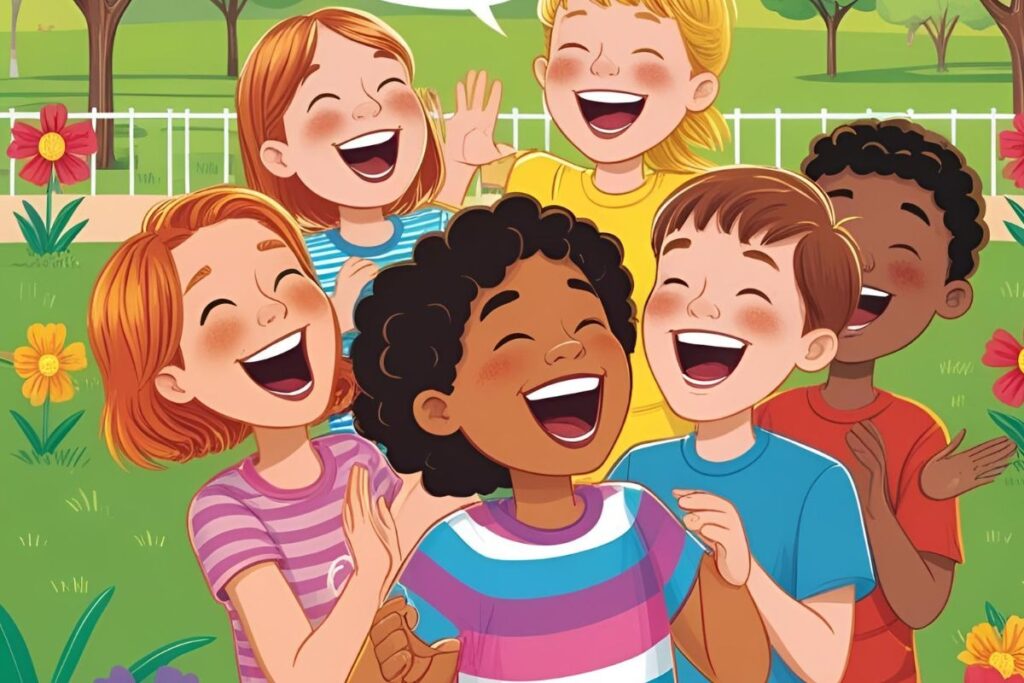
Alliteration is also a fantastic tool for students too! From elementary school poetry to high school presentations, strategic use of alliteration can take your school projects from basic to brilliant.
In fact, studies show that bilingual students often use alliteration in their second language as subtly and creatively as poets, hinting at deep cognitive flexibility.
Strategic use of this technique can turn any school project from basic to brilliant.
Need to create an attention-grabbing title for your science fair project? Try something like “Magnificent Magnetic Mysteries” instead of the plain “Magnetism Experiment.”
For a history presentation on ancient Egypt, “Pharaohs and Their Fascinating Pyramids” immediately sounds more engaging than “Egyptian Rulers and Their Tombs.”
Coming up with the perfect alliterative phrase isn’t always easy, but Undetectable AI’s Ask AI can change that.
This tool is basically your brainstorming buddy, ready to generate topic-specific alliterations whenever you’re stuck.
For instance, if you’re working on a solar system project, Ask AI can generate planet-specific alliterations like “Mercury moves mysteriously,” “Venus varies vastly,” or “Saturn’s spectacular spinning storms.”
It takes the pressure off having to come up with these phrases yourself, letting you focus on the content of your project.
Ask AI is great for quick alliteration help, but when you’re ready to level up your creativity, Undetectable AI’s AI Chat is a lifesaver.
It goes beyond single phrases and acts like a true creative partner.
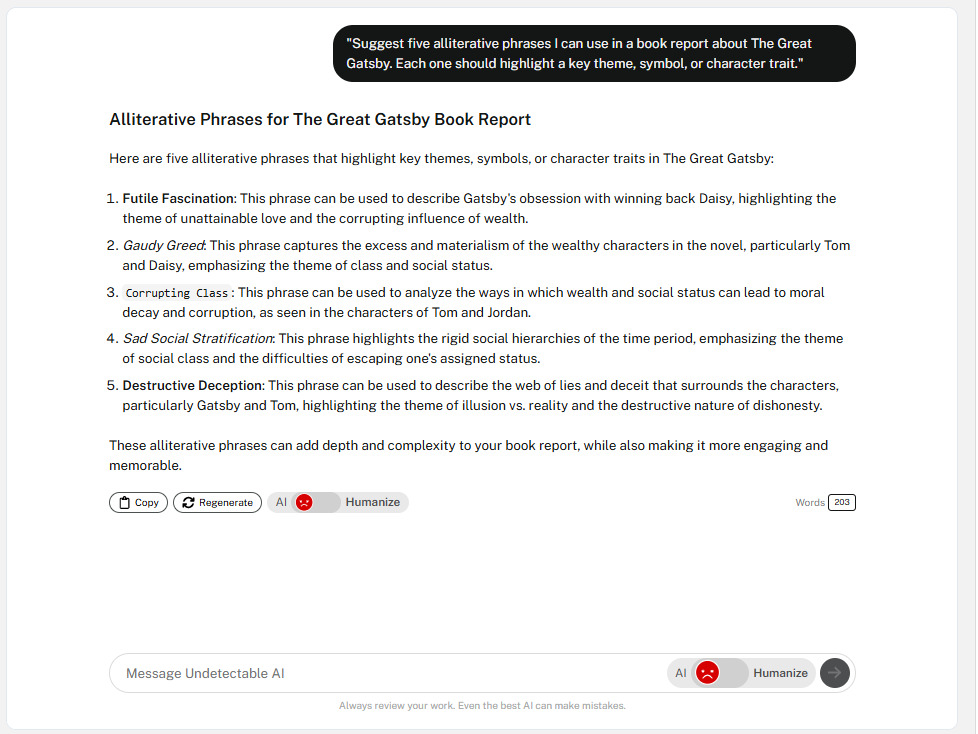
Working on a book report for The Great Gatsby? AI Chat can generate lines like “Gatsby’s glamorous gatherings” or “Daisy’s delicate demeanor” to elevate your writing. Need an alliterative intro, a catchy conclusion, or themed section headings?
It’s one of the best AI tools to generate poems or turn your ideas into polished, memorable content that stands out.
Writing Your Own Alliteration: Step-by-Step
Ready to create some amazing alliteration of your own?
Let’s break it down into manageable steps that anyone can follow:
- Start with your subject. Pick the main thing you want to write about. Let’s say it’s “dogs.”
- Brainstorm related words. What words relate to your subject? For dogs, you might think of: loyal, playful, furry, bark, fetch, etc.
- Choose a sound to repeat. Maybe you like the “p” sound. Look for words starting with that sound that could describe dogs: playful, proud, protective, powerful.
- Craft your phrase. Put it all together: “Playful puppies proudly prancing” or “protective pooches patrolling property.”
- Refine for flow. Read your alliteration aloud. Does it roll off the tongue? If not, swap out words until it does.
- Don’t force it. Quality beats quantity. Two or three alliterative words often work better than trying to make every single word fit the pattern.
Creating natural-sounding alliteration can be tricky.
Sometimes your alliterative phrases might sound forced or unnatural when you’re trying too hard to make the pattern work, or if you’ve employed a little help from AI.
In these cases, if you want to play with alliteration in a more creative way, you can try our Undetectable AI’s Poem Generator.
It lets you explore different sound patterns by turning your ideas into short poetic lines, so you can experiment with alliteration and hear how the repeated consonant sounds shape the mood of your writing before creating your final version in your own voice.
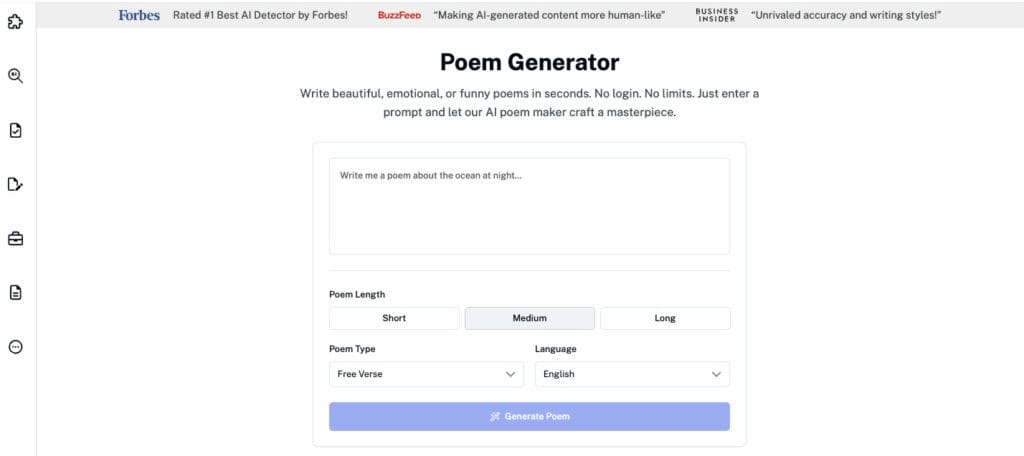
Also, Undetectable AI’s AI Humanizer comes in handy.

The AI Humanizer helps maintain that delicate balance between poetic flow and natural language.
It can take your initial attempts at alliteration and refine them to sound more natural while preserving the alliterative pattern.
It’s like having an editor who specializes in making creative language sound authentically human.
With practice (and sometimes a little help from AI writing tools), you’ll start to develop an ear for alliteration that works.
Soon you’ll be spotting opportunities to use it in your writing, speeches, or creative projects without even thinking about it!
Common Mistakes to Avoid
Even experienced writers sometimes stumble when working with alliteration.
Here are the pitfalls to watch out for:
- Overdoing it is probably the most common mistake. Alliteration is like seasoning—a little goes a long way. When every word in your paragraph starts with the same sound, it becomes distracting rather than enhancing. Aim for impact, not exhaustion.
- Confusing alliteration with assonance or consonance happens frequently. Remember that alliteration specifically refers to the repetition of initial consonant sounds. Repeating vowel sounds (assonance) or consonant sounds within or at the end of words (consonance) are different techniques.
- Focusing on spelling rather than sound is another error. “City” and “cat” create alliteration because they start with the same “k” sound, even though one is spelled with a “c.” Meanwhile, “giant” and “garage” don’t create alliteration despite both starting with “g” because their initial sounds differ.
- Forcing unnatural word choices just to maintain alliteration can make your writing awkward. Don’t use an obscure five-dollar word when a simple one would communicate more clearly, even if the fancy word fits your alliterative pattern.
- Creating tongue twisters accidentally can happen when you’re so focused on alliteration that you don’t notice you’ve created something nearly impossible to say aloud. Always read your work out loud to catch these issues.
If you find yourself making these mistakes, don’t stress! Undetectable AI’s AI Chat can review your draft, explain what might be going wrong, and suggest corrections.
It can help you identify where your alliteration might be excessive or point out instances where you’ve confused sound patterns.
The AI Chat functions like a writing coach and a copy editing tool at the same time, helping you understand the principles behind effective alliteration rather than just fixing the immediate issues.
Don’t leave without exploring our AI Detector and Humanizer in the widget below!
Frequently Asked Questions About Alliteration
What is it called when several words start with the same letter?
That’s alliteration. The repetition of initial consonant sounds in nearby words or stressed syllables.
Example: “Which witch switched the Swiss wristwatches?”
What’s the difference between alliteration and rhyme?
Alliteration repeats beginning sounds (“Peter Piper picked…”), while rhyme repeats ending sounds (“cat” and “hat”). Think: start vs. end.
How is alliteration different from repetition?
Alliteration is a type of repetition specifically of starting consonant sounds. Repetition, more broadly, includes repeating any word, phrase, or sound for effect (“I have a dream…”).
Make Your Message Memorable
Alliteration is so much more than just a fancy literary term. It’s a versatile tool that can transform ordinary writing into something memorable.
From Shakespeare and Dr. Seuss to 2Pac and Jay-Z, from advertising slogans to political speeches, this simple technique has proven its power again and again.
The beauty of alliteration lies in its accessibility.
Anyone can use it, regardless of writing experience. You don’t need an advanced degree in literature to craft a phrase like “fantastic flying frisbees” or “delicious, decadent desserts.”
With a little practice and attention to sound patterns, you can incorporate this technique into everything from school assignments to professional presentations.
So, next time you’re writing anything, don’t shy away from leaning into those repeating sounds.
Alliteration can give your words rhythm, punch, and polish, making them more engaging and easier to remember.
And if you’re stuck? Undetectable AI can help you brainstorm, rephrase, and fine-tune your alliterative phrases with ease.
Just listen for the music in language, and don’t be afraid to play with sound.
After all, in the wonderful world of writing, alliteration adds that awesome aesthetic appeal that amplifies your audience’s attention.
